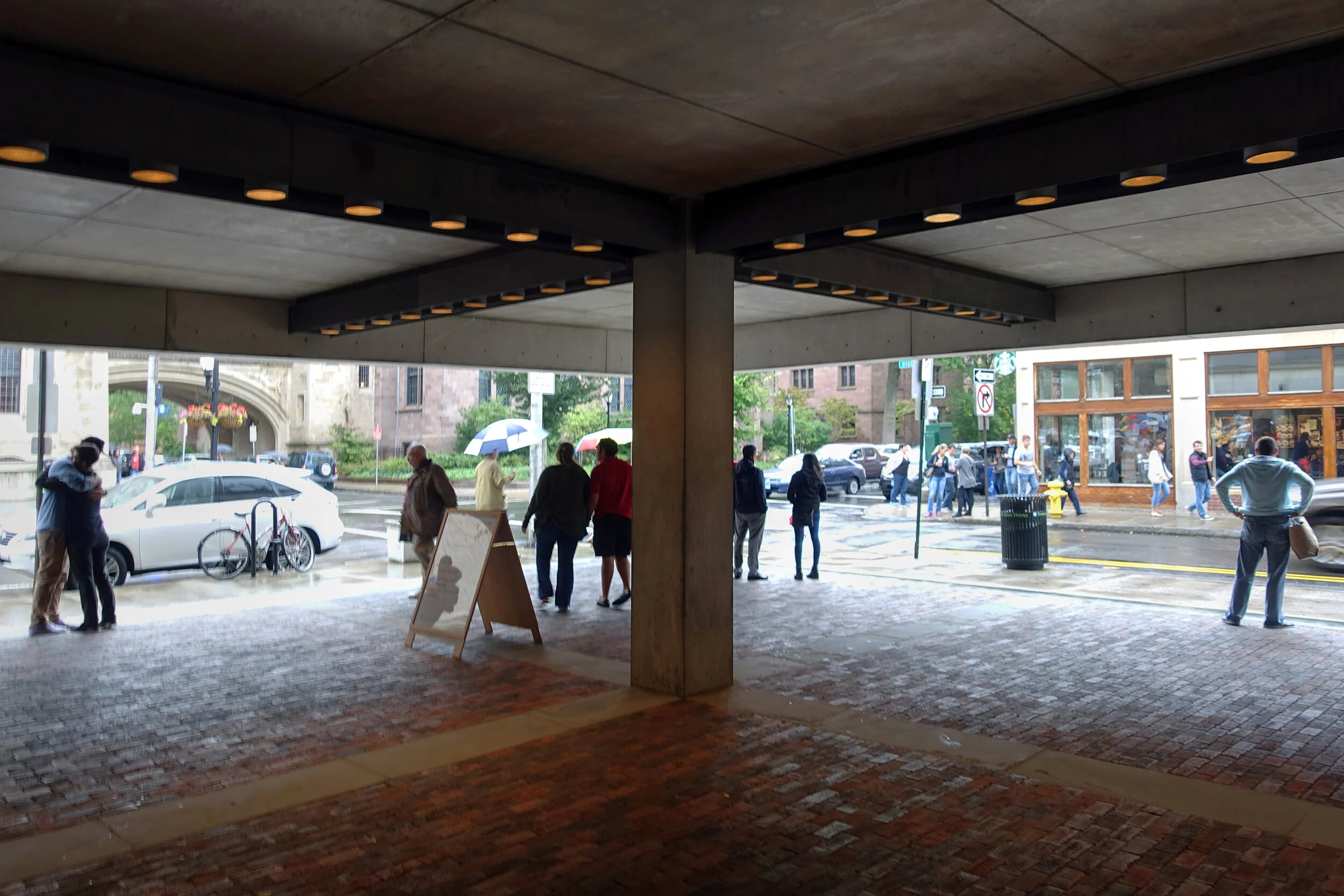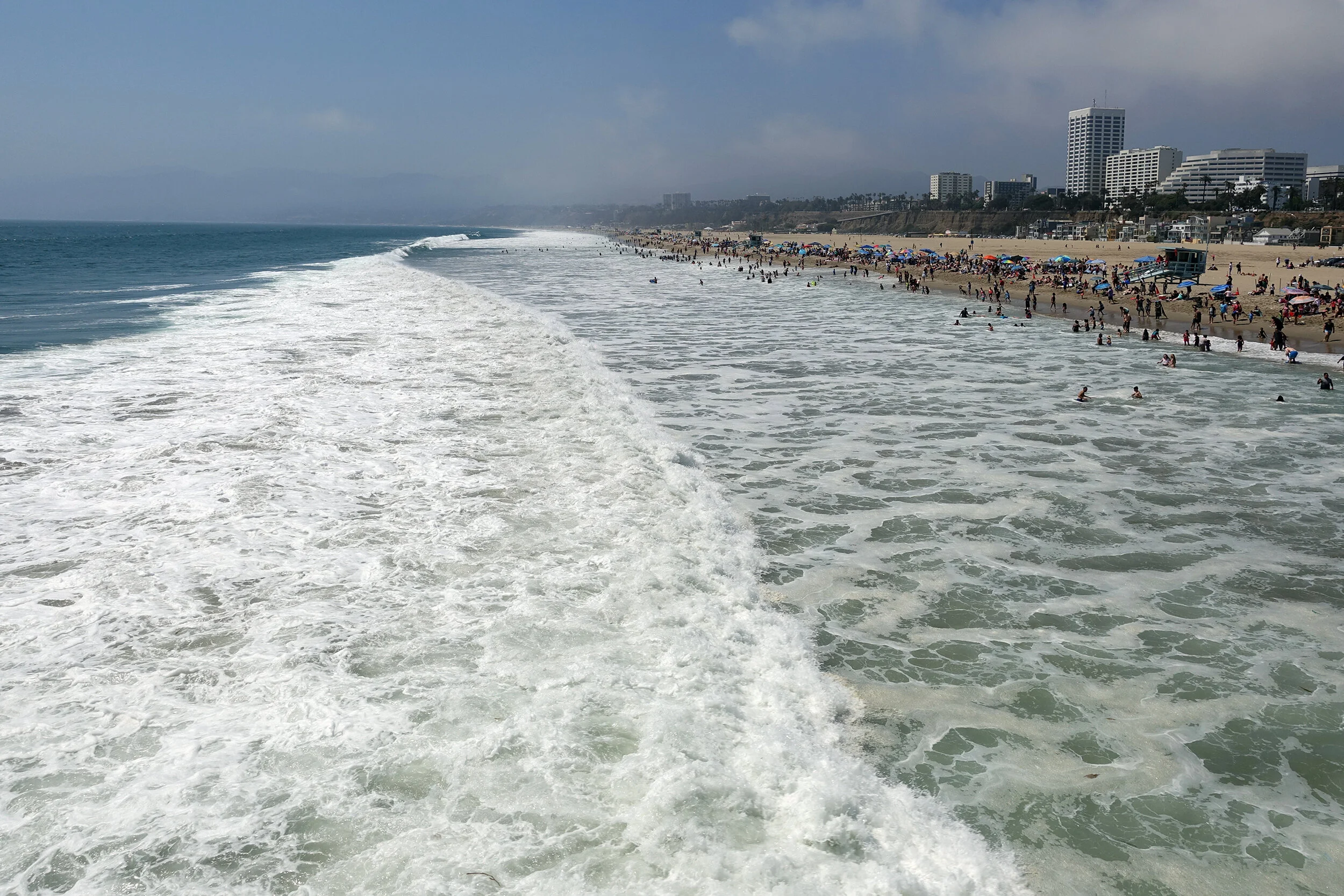
Page 3 of 4
New Haven, Connecticut
Can't stand the modern act, whose war is this, what god is that
Welcome to New Haven, Connecticut, home to amazing Paul Rudolph buildings and awful Yale students (to be fair, only some of them are awful). The Yale campus is a hodge podge of architectural styles with some real gems thrown in including this one- Gordon Bunschaft’s classic Beinecke Rare Books Library.
It's hard to estimate the wonder of entering the recently renovated Beinecke Rare Books Library. From the outside it's a fine, well proportioned solid box, but once inside the translucent stone exterior panels start to light up in a color that needs to be seen to be appreciated. Even on a rainy day in New Haven, the muted glow is unmistakable. And the interior, with its caged in, glowing, freestanding rare books box (now) all cleaned up, is just as close to perfect as you could ever hope to see in a Modern building.
Everything in New Haven that was old is suddenly new again. After a renovation of the Beinecke Rare Books Library, Yale University also went in and cleaned up Louis Kahn's British Art Museum. Sure, everything you remember is exactly where you left it, but suddenly it's all just a little cleaner and newer. Technically you'll see more now than what even Louis Kahn himself ever saw- he died in one of the worst places on earth (the men's room at New York's own Penn Station) three years before the British Art Museum was finished.
Only (very) recently did I actually become a member of DOCOMOMO, an earnest organization that is committed to preserving and documenting Modern Architecture. My membership may be (very) new despite the fact that I have been taking advantage of their tours for years now and just not receiving a member discount. Every October they offer a tour day when buildings across the country are open. In 2016 they all required advance reservations at every nearby building except for this one, a church in Stamford, Connecticut called The Fish. It was designed by Wallace Harrison, a man who had his hand in a lot of big New York projects (both Queens Worlds Fairs, Rockefeller Center, the UN, Lincoln Center, the mall in Albany) but was not necessarily known for his churches.
From the outside The Fish is interesting, but on the inside it's a whole new world.
The Fish shares its DNA with another Wallace Harrison building, the New York Hall of Science in Flushing Corona Park in Queens. Both are concrete structures with all stained glass walls, although the church in Stamford is far more immersive. It's also falling apart and in dire need of a renovation or at least a clean up- close up views of the walls show exactly what would happen to a mid century modern building if you chose never to maintain it. Still regardless of any issues, the interior remains downright spectacular, a must see for anyone interested in interesting spaces and a gem that keeps a profile so low that it's practically hidden in plain sight.
SANAA's spectacular new campus at Grace Farms is as wonderful as you think it is- a beautiful cascading river of curved glass pavilions on an almost perfect piece of land. The curved glass gives you unexpected reflections that frame the project perfectly, blurring into the landscape and into itself at every turn.
If you decide to go see Grace Farms for yourself (you really should if you can), first off you should make sure that you are following directions on your GPS since the only signage you'll ever see is so understated that it's practically invisible (that may have something to do with all of those people who live in all of those outrageously sized homes all around that part of New Canaan). Then after you show your drivers license to the seemingly friendly guy at the security booth and then park, you'll find yourself heading right to the "River", which is Grace Farms' chosen name for the SANAA building. The building flows over the hills and starts at a large auditorium, then encompasses a library, a large cafe, a small lounge and a partially underground basketball court, with covered walkways and seating areas scattered in between and throughout. Grace Farms is non-profit and says it was built as a center for "faith, nature, art. community and social justice." The faith part makes sense since a church (Grace Community Church) is kind of behind the whole thing. Nature also makes sense (it's a beautiful property and nature trails are scattered surrounding the River), as does art (there is a decent art program) and community (they have a strong schedule of events that shows they're all in on that one). Out of all of them the tough one to justify is social justice. The place is absolutely beautiful and highly recommended for a visit, but its location alone gives it an inescapable air of elitism that makes the idea of it being a social justice center somewhat of an anomaly, at best.

